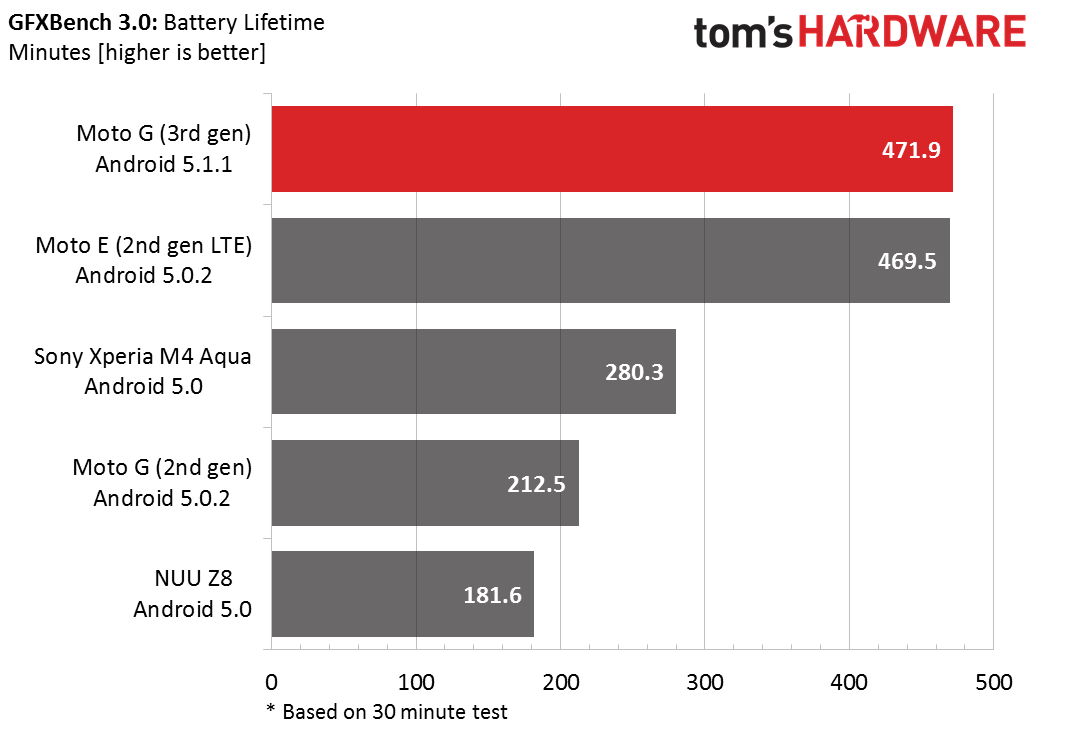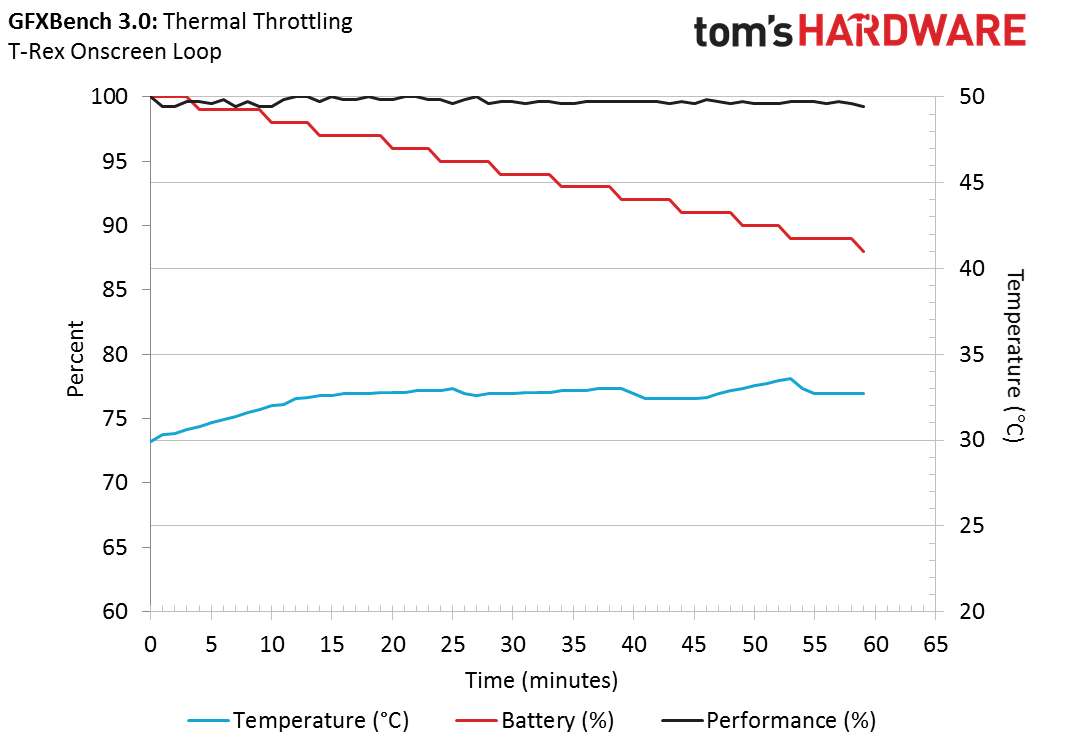Motorola Moto G (3rd gen) Review
Why you can trust Tom's Hardware
Battery Life And Thermal Throttling
Battery life may be the most important performance metric for a mobile device. After all, it does not matter how quickly a phone or tablet can load webpages or how many frames per second the GPU can crank through once the battery runs down and the device shuts off. To learn more about how we test this critical facet of mobile computing, please read our battery testing methodology article.
The Basemark OS II battery test represents a worst-case scenario for CPU power draw. Here we see that the Moto G (3rd gen) has the least efficient CPU in this test. Both the new Moto G and the Moto E (2nd gen) use a Snapdragon 410 SoC, but the Moto E runs its cores at a lower max frequency and comes with a smaller screen, which help it achieve a 17% higher score.
In our review of the Moto E (2nd gen), we noted that an A7 CPU core, like the Snapdragon 400 in the Moto G (2nd gen) uses, has roughly a 10-20% performance per watt advantage over an A53 core. In this test, however, the second-generation Moto G only pulls ahead of the newer model by 8.6%. The latest Moto G’s larger battery at least partially compensates for the A53 core’s power penalty, but not all of it. Still, running the CPUs near 100% load for hours is unrealistic, so we should not give up hope yet.


PCMark runs a varied, real-world workload that is a better predictor for actual battery life. As a full system-level test, the power efficiency of the screen, CPU, GPU, RAM, and NAND all factor into the battery life results. Since the Moto G’s screen, like all of the phones we’ve seen in this price range, does not support Panel Self-Refresh, the display system will draw a bit more power during normal use than more expensive panels.
When the CPU is not running flat-out, the Moto G (3rd gen) exhibits excellent battery life, lasting 8 hours and 27 minutes in the PCMark battery life test. This is a 66% improvement over the previous Moto G. What’s even more impressive is that it lasts as long as it does while still achieving a high level of performance, essentially equaling the speed of the NUU Z8 but with 54% more battery life.


The GFXBench 3.0 battery test focuses on the GPU and is an indicator of battery life during intense gaming. It also effectively gauges a device’s ability to dissipate heat.
The Moto G (3rd gen) lasts almost as long on a charge in this test (7 hours and 52 minutes) as it did in the PCMark battery test. That’s the good news. The bad news is that it only achieves this milestone because it’s the slowest phone in the group. The Moto E (2nd gen) shows better performance because this is an onscreen test and its display has a lower resolution, and the Moto G (2nd gen) is faster because its GPU runs at a higher frequency.
Get Tom's Hardware's best news and in-depth reviews, straight to your inbox.


As with other phones running Snapdragon 400 family SoCs, we do not see any thermal throttling over the full length of the GFXBench 3 battery test. Also, the peak skin temperature on the back of the phone stays below 100 °F, so the Moto G never gets warm in your hand.
After using both the Moto G (3rd gen) and Moto G (2nd gen) as our primary phone, it does seem like the new Moto G gets significantly better battery life in both usage as well as idle time. By sticking to the basics and increasing the battery size, the Moto G’s best feature may be its battery life.
Current page: Battery Life And Thermal Throttling
Prev Page GPU And Gaming Performance Next Page ConclusionLucian Armasu is a Contributing Writer for Tom's Hardware US. He covers software news and the issues surrounding privacy and security.
